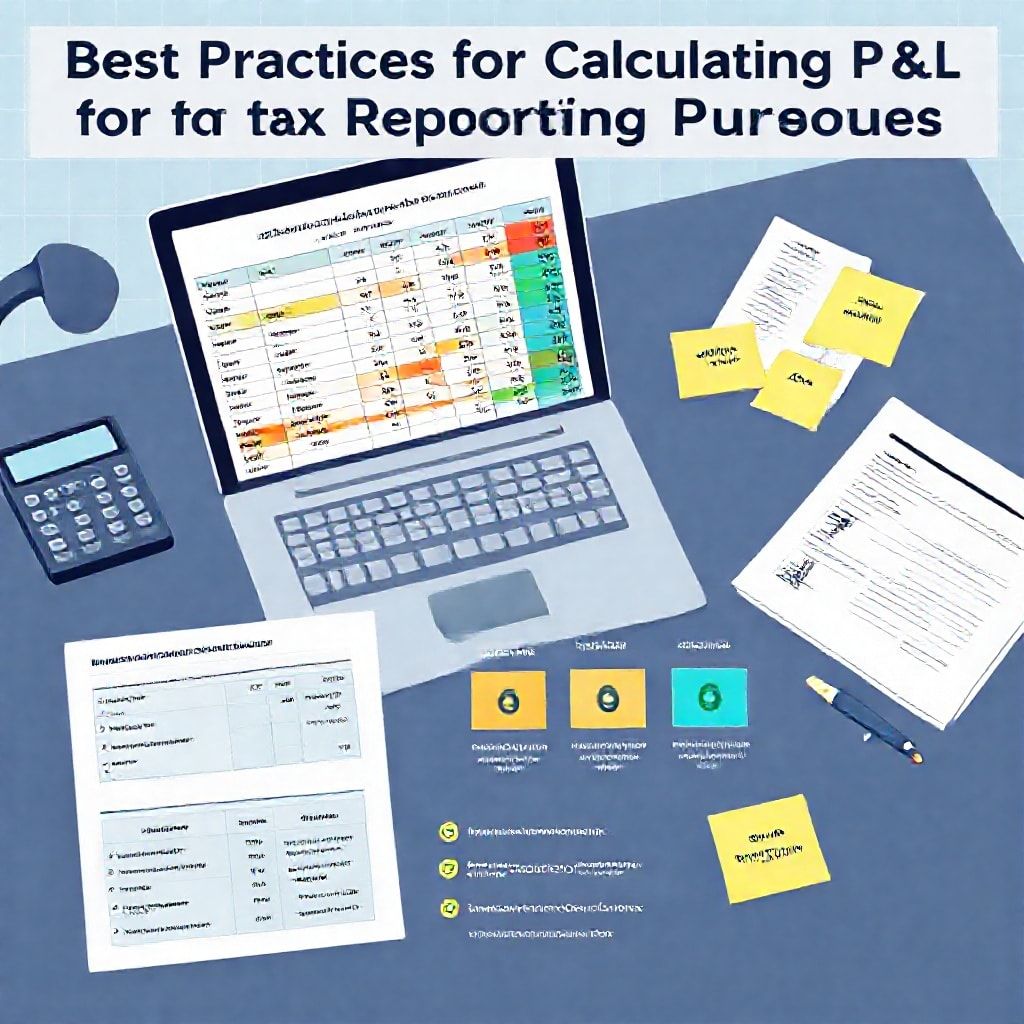What are the best practices for calculating P&L for tax reporting purposes?
Best Practices for Calculating P&L for Tax Reporting Purposes
Intro:
In today’s multi-asset trading world—forex, stocks, crypto, indices, options, and commodities—the way you track P&L matters beyond quarterly numbers. Getting P&L right means cleaner tax reporting, less ambiguity during filing season, and a smoother path for audits or growth planning. This guide shares practical strategies that blend solid record-keeping with real-world trading workflows.

Foundational practices for P&L tracking
- Separate realized from unrealized gains and losses. For tax reporting, focus on realized P&L when you actually close a position, while keeping clear notes on open positions and their current mark-to-market value. This helps you avoid misreporting interim swings as taxable events.
- Use cost basis methods that suit your activity. Specific Identification is ideal if you can tag each lot (purchase lot, price, fees). FIFO can work too but may create mismatches if you frequently switch lots. Know what your tax jurisdiction permits and align your method with your trading cadence.
- Reconcile every trade across multiple venues. When you trade on multiple platforms, bring in confirmations, trade IDs, and timestamps to prevent gaps. A consolidated ledger reduces calculation errors and supports audit readiness.
Asset-specific considerations
- Forex and indices. P&L from currency pairs and index instruments often depends on the instrument type and local tax rules. Keep detailed records of point values, lot sizes, and any rollover costs. Regular reconciliations help you separate swap/rollover income from principal gains.
- Stocks and ETFs. Treat each sale as a realized event with associated cost basis. Remember to capture corporate actions (splits, dividends) as they impact cost basis and subsequent gains.
- Crypto and DeFi. Crypto trades are typically treated as property in many jurisdictions, so cost basis and holding period drive gains or losses. DeFi activity—swaps on DEXs, liquidity provider rewards, staking—adds complexity: log each swap price, fee, and the exact token used; staking rewards generally have taxable implications when earned, not just when sold.
- Options and commodities. Options can produce multiple tax events (exercise, assignment, sale). Keep separate P&L for each leg and factor in premiums, intrinsic value, and time value. Commodities may follow different and sometimes favorable tax rules; track storage costs and any futures contracts distinctly.
Tech stack and documentation
- Centralized ledger with exportable reports. Use a portfolio ledger that auto-imports trade data from exchanges and wallets, then categorizes trades by asset class and tax event. Being able to export summaries to tax software or a CPA saves hours at filing time.
- Attach supporting documents. Save trade confirmations, API receipts, and cost basis notes for every entry. Clear annotation helps when you need to explain a specific lot or a DeFi transaction.
- Leverage specialized tools sparingly. Tax software and accounting platforms can automate much of the work, but you’ll still need to review for accuracy, especially with cross-chain activity and complex instruments.
Leveraged trading and risk management
- Be wary of magnified P&L distortions. Leverage can inflate gains and losses; keep a separate risk worksheet to track margin calls, interest, and financing costs. Tax reporting benefits from clarity about which gains came from price moves versus financing costs.
- Pragmatic risk controls. Use stop-loss discipline, maintain reasonable position sizes, and document the rationale for leverage levels. Clear risk controls translate to cleaner tax narratives and fewer surprise adjustments later.
DeFi era: challenges and opportunities
- Decentralized finance accelerates access and diversification, but increases record-keeping burden. You need robust on-chain analysis, with transaction-level logs and clear attribution of each swap, liquidity event, or yield reward to P&L.
- Tax compliance in a fast-evolving landscape. Stay aware of regulatory updates, especially around cross-chain activity and new product types. Pair technical tracking with periodic reviews with a tax pro who understands Web3.
Future-proofing: smart contracts and AI-driven trading
- Smart contracts expand automation for execution and record-keeping. Ensure your P&L ledger can ingest on-chain data and map it to tax lots without manual re-entry.
- AI-assisted trading will intensify data complexity. Build your workflow to validate AI-derived trades against receipts, fees, and costs, keeping a transparent chain of custody for every P&L entry.
Slogans to keep in mind
- “P&L you can trust, tax reporting you can file with ease.”
- “Clarity in every trade, compliance in every report.”
- “From chart to form: precise P&L, confident filing.”
In the end, the smartest approach blends disciplined record-keeping, asset-aware methodologies, and a practical use of technology. Talk to a CPA who understands multi-asset and DeFi contexts, and keep your tax strategy aligned with your trading goals.
YOU MAY ALSO LIKE




